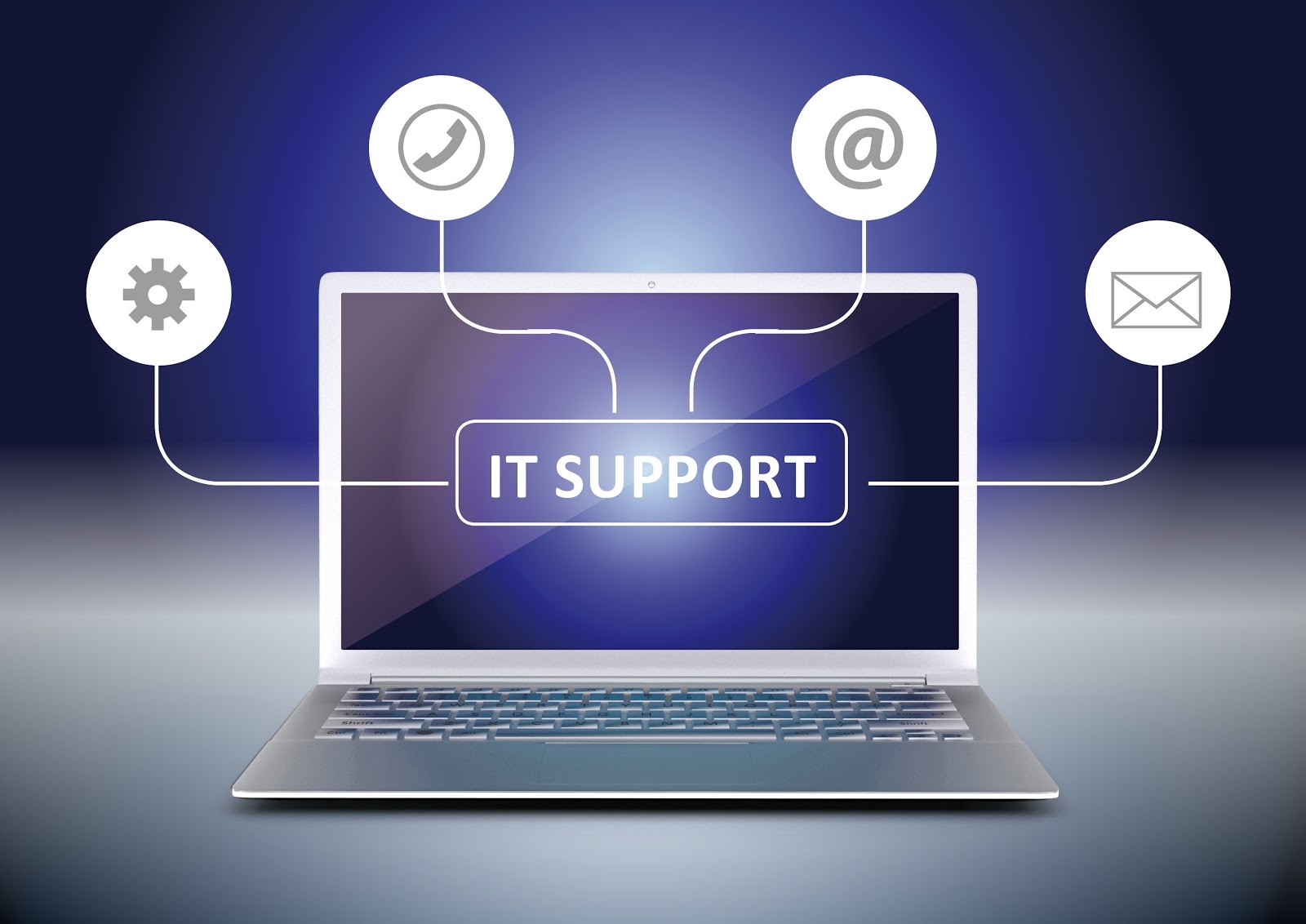
In today’s digital age, mobile devices have become integral to our lives, serving as tools for communication, business transactions, entertainment, and more. As the use of mobile devices continues to grow, so do the risks associated with their security. Cyber threats such as malware, phishing, and data breaches are increasingly targeting mobile devices, making it imperative for individuals and organizations to invest in robust IT security services. This blog explores how IT security services improve mobile device security, highlighting the key strategies, technologies, and best practices involved.
The Growing Importance of Mobile Devices
Mobile devices, including smartphones, tablets, and wearables, have revolutionized our lives and work. They provide unprecedented convenience, allowing users to access information, communicate, and perform tasks on the go. However, this convenience comes with significant security challenges. Mobile devices often store sensitive data, such as personal information, financial details, and corporate data, making them attractive targets for cybercriminals.
The Threat Landscape
The threat landscape for mobile devices is constantly evolving. Common threats include:
- Malware: Malicious software designed to damage or disrupt devices, steal information, or gain unauthorized access.
- Phishing: Deceptive attempts to obtain sensitive information by masquerading as trustworthy entities.
- Data Breaches: Unauthorized access to sensitive data, often resulting in data theft or exposure.
- Man-in-the-Middle Attacks: Interception of communication between two parties to steal data or inject malicious content.
- Device Theft or Loss: Physical loss or theft of devices, leading to potential data breaches.
Given these threats, it is crucial to implement comprehensive IT security services to protect mobile devices.
Key Components of Mobile Device Security
1) Mobile Device Management (MDM)
Mobile Device Management (MDM) is critical to mobile device security. MDM solutions enable organizations to manage and secure mobile devices, regardless of location. Key features of MDM include:
- Device Enrollment: Automating the process of enrolling devices into the management system.
- Policy Enforcement: Defining and enforcing security policies, such as password requirements and encryption.
- Remote Wipe: Remotely erasing data on lost or stolen devices to prevent unauthorized access.
- Application Management: Controlling the installation and use of applications on devices.
- Compliance Monitoring: Ensuring devices comply with security policies and regulatory requirements.
2) Mobile Application Management (MAM)
Mobile Application Management (MAM) focuses on securing and managing applications on mobile devices. MAM solutions provide the following capabilities:
- App Wrapping: Adding security layers to applications without modifying their functionality.
- Containerization: Isolating corporate data and applications from personal data on the device.
- App Distribution: Securely distributing applications to users through enterprise app stores.
- Access Control: Managing user access to applications based on roles and policies.
- App Analytics: Monitoring application usage and detecting potential security risks.
3) Endpoint Detection and Response (EDR)
Endpoint Detection and Response (EDR) solutions provide real-time monitoring and analysis of endpoint activities, including mobile devices. EDR solutions offer:
- Threat Detection: Identifying and responding to security threats in real time.
- Behavioural Analysis: Analyzing device behaviour to detect anomalies and potential threats.
- Incident Response: Automating incident response actions, such as isolating compromised devices.
- Threat Intelligence: Integrating intelligence feeds to stay updated on the latest threats.
- Forensics: Conducting forensic analysis to understand the scope and impact of security incidents.
4) Mobile Threat Defense (MTD)
Mobile Threat Defense (MTD) solutions are designed to protect mobile devices from various threats. MTD solutions provide:
- Malware Detection: Identifying and blocking malware on devices.
- Phishing Protection: Detecting and preventing phishing attacks.
- Network Security: Securing device communication over Wi-Fi, cellular, and VPN connections.
- Vulnerability Management: Identifying and addressing vulnerabilities in the device and applications.
- Compliance Enforcement: Ensuring devices comply with security policies and industry regulations.
5) Encryption and Data Protection
Encryption is a fundamental aspect of mobile device security. It ensures that data stored on devices and transmitted over networks is protected from unauthorized access. Key encryption practices include:
- Device Encryption: Encrypting data stored on the device to protect it in case of theft or loss.
- App Encryption: Encrypting data within applications to ensure data privacy and integrity.
- Communication Encryption: Using encryption protocols such as SSL/TLS to secure data in transit.
- Cloud Encryption: Encrypting data stored in cloud services to protect it from unauthorized access.
6) Multi-Factor Authentication (MFA)
Multi-factor authentication (MFA) enhances mobile device security by requiring multiple verification forms for user authentication. MFA can include:
- Something You Know: Passwords or PINs.
- Something You Have: One-time passwords (OTPs) sent to a mobile device or generated by an authenticator app.
- Something You Are: Biometric factors such as fingerprints or facial recognition.
MFA adds an extra layer of security, making it more difficult for unauthorized users to access devices and data.
Benefits of IT Security Services for Mobile Devices

1) Enhanced Security
IT security services provide comprehensive protection against various threats, ensuring mobile devices are secure from malware, phishing, data breaches, and other attacks. By implementing robust security measures, organizations can safeguard sensitive data and maintain the integrity of their mobile infrastructure.
2) Improved Compliance
Regulatory compliance is a critical consideration for many organizations. IT security services help ensure mobile devices comply with industry regulations and standards, such as GDPR, HIPAA, and PCI-DSS. This reduces the risk of non-compliance penalties and enhances the organization’s reputation.
3) Increased Productivity
Security incidents can disrupt business operations and reduce productivity. IT security services minimize the risk of such disruptions by providing proactive threat detection and response. This allows employees to work efficiently without interruptions, ultimately improving overall productivity.
4) Reduced Risk of Data Breaches
Data breaches can have severe consequences, including financial losses, legal liabilities, and reputational damage. IT security services help prevent data breaches by implementing robust security measures like encryption, MFA, and real-time threat detection. These measures reduce the risk of unauthorized access to sensitive data.
5) Streamlined Management
Managing mobile device security can be complex and time-consuming. IT security services streamline this process by providing centralized management and automation. This simplifies the administration of security policies, device configurations, and compliance monitoring, allowing IT teams to focus on strategic initiatives.
6) Enhanced User Experience
Security measures should not compromise the user experience. IT security services balance security and usability, ensuring users can access the resources they need without friction. This enhances user satisfaction and encourages the adoption of security best practices.
Implementing IT Security Services for Mobile Devices
1) Assessing Security Needs
The first step in implementing IT security services for mobile devices is to assess the organization’s security needs. This involves identifying the types of data stored on mobile devices, the potential threats, and the regulatory requirements. A thorough assessment helps determine the appropriate security measures and technologies to implement.
2) Selecting the Right Solutions
Numerous IT security solutions are available, each with its strengths and capabilities. Organizations should carefully evaluate different solutions based on their needs and choose the best protection. Considerations include:
- Integration: Compatibility with existing IT infrastructure and applications.
- Scalability: Ability to scale with the organization’s growth and changing needs.
- Ease of Use: User-friendly interfaces and straightforward deployment.
- Support: Technical support and regular updates are available.
3) Developing Security Policies
Security policies are essential for defining the rules and guidelines for mobile device usage. Policies should cover aspects such as:
- Device Enrollment: Procedures for enrolling devices into the management system.
- Password Requirements: Guidelines for creating and managing strong passwords.
- App Usage: Rules for installing and using applications on devices.
- Data Protection: Measures for protecting sensitive data, including encryption and backup.
- Incident Response: Procedures for responding to security incidents and breaches.
4) Training and Awareness
Security is only as strong as its weakest link, which is often the end-user. Organizations should invest in training and awareness programs to educate employees about best practices for mobile device security. Topics to cover include:
- Recognizing Phishing Attempts: Identifying and avoiding phishing emails and messages.
- Safe App Usage: Downloading and using applications from trusted sources.
- Password Management: Creating and managing strong, unique passwords.
- Incident Reporting: Reporting lost or stolen devices and suspicious activities.
5) Continuous Monitoring and Improvement
Mobile device security is an ongoing process that requires continuous monitoring and improvement. Organizations should regularly review their security measures, conduct vulnerability assessments, and update their security policies to address emerging threats. Continuous monitoring and improvement help maintain a robust security posture.
6) Future Trends in Mobile Device Security
7) Artificial Intelligence and Machine Learning
Artificial Intelligence (AI) and Machine Learning (ML) are increasingly important in mobile device security. AI and ML can analyze vast amounts of data to identify patterns, detect anomalies, and predict potential threats. Future trends in AI and ML for mobile device security include:
- Advanced Threat Detection: Using AI and ML to identify sophisticated threats and zero-day vulnerabilities.
- Behavioral Analytics: Analyzing user behaviour to detect unusual activities and potential security risks.
- Automated Response: Automating incident response actions based on AI and ML analysis.
8) Zero Trust Security
Zero Trust Security is a security model that assumes no trust for any device, user, or network, regardless of their location. Zero Trust Security principles include:
- Continuous Verification: Continuously verifying the identity and trustworthiness of devices and users.
- Least Privilege: Granting the minimum necessary access to resources based on roles and responsibilities.
- Micro-Segmentation: Dividing the network into smaller segments to contain potential breaches.
Zero Trust Security is becoming increasingly relevant for mobile device security, especially in remote work environments.
9) 5G Technology
The rollout of 5G technology is set to transform mobile device security. 5G offers faster speeds, lower latency, and increased connectivity but introduces new security challenges. Future trends in 5G and mobile device security include:
- Network Slicing Security: Securing different slices of the 5G network to prevent unauthorized access.
- IoT Security: Protecting the growing number of IoT devices connected through 5G networks.
- Edge Computing Security: Ensuring the security of data processed and stored at the network edge.
10) Biometric Authentication
Biometric authentication methods like facial recognition and fingerprint scanning are becoming more prevalent in mobile device security. Future trends in biometric authentication include:
- Multi-Modal Biometrics: Combining multiple biometric factors for enhanced security.
- Behavioural Biometrics: Analyzing behavioural patterns, such as typing speed and touch gestures, for continuous authentication.
- Privacy-Preserving Biometrics: Implementing privacy-enhancing technologies to protect biometric data.
11) Regulatory Compliance
Regulatory compliance will continue to be a significant factor in mobile device security. Future trends in regulatory compliance include:
- Global Data Protection Regulations: Adapting to evolving data protection regulations like GDPR and CCPA.
- Industry-Specific Standards: Complying with industry-specific security standards, such as HIPAA for healthcare and PCI-DSS for finance.
- Cross-Border Data Transfers: Ensuring compliance with regulations governing cross-border data transfers.
Mobile device security is a critical aspect of modern IT security. As mobile devices become more integral to our personal and professional lives, robust security measures are paramount. IT security services play a vital role in protecting mobile devices from a wide range of threats, ensuring compliance with regulations, and enhancing user productivity.
By implementing Mobile Device Management (MDM), Mobile Application Management (MAM), Endpoint Detection and Response (EDR), Mobile Threat Defense (MTD), encryption, Multi-Factor Authentication (MFA), and other security measures, organizations can safeguard their mobile devices and sensitive data. Continuous monitoring, training, and awareness programs further strengthen the security posture.
Future trends in mobile device security, such as AI and ML, Zero Trust Security, 5G technology, biometric authentication, and regulatory compliance, will shape the landscape. By staying informed about these trends and adopting proactive security strategies, organizations can navigate the evolving threat landscape and ensure the security of their mobile devices in the digital age.


